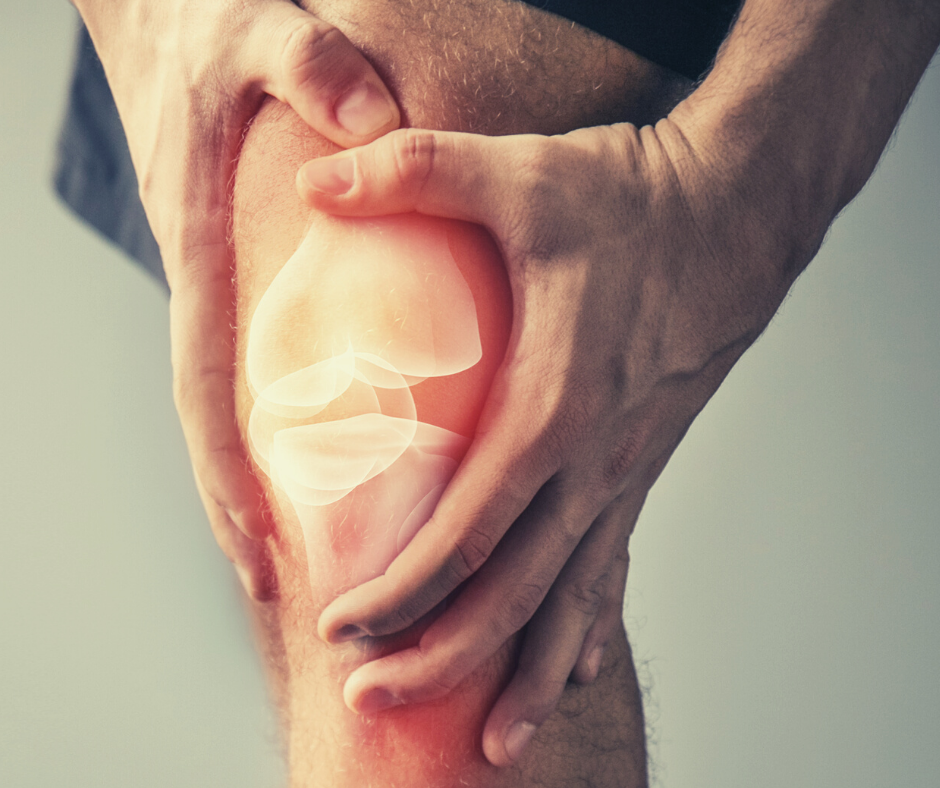
Arthritis
Arthritis is a chronic progressive condition that causes inflammation, swelling, pain, and stiffness in one or more joints.
Osteoarthritis
Osteoarthritis is the most common form of arthritis. It is a degenerative joint disease that commonly affects the hips, knees, hands, and spine. With osteoarthritis, the cartilage around joints breaks down due to overuse, poor mechanics during activity, or injury. Without enough cartilage, the bones begin to rub together, leading to pain, inflammation, swelling, and loss of function in the joint.
Rheumatoid Arthritis
Rheumatoid arthritis is an autoimmune disease that causes the linings of the joints to become inflamed as the immune system attacks soft tissues around the joints, causing pain, stiffness, and inflammation. Rheumatoid arthritis commonly affects the hands, wrists, and feet first and can progress to the hips, knees, and shoulders.
Knee Osteoarthritis
Osteoarthritis of the knee causes the cartilage between the tibia and femur to break down, causing the bones to rub against each other during movement and causing swelling and pain.
Symptoms can include knee stiffness (especially in the morning), cracking or crunching noise in the knee, or locking or catching sensation in the knee.
Hip Osteoarthritis
Osteoarthritis of the hip occurs when the cartilage that lines the acetabulum (socket formed by pelvic bone) and the head of the femur (ball of the hip joint) wears away. This causes the ball and socket of the hip joint to rub against each other, fraying and narrowing the joint space, leading to bone spur growth and pain. Symptoms include pain in the groin, a grinding or locking noise in the hip, and significant hip stiffness.
Spinal Osteoarthritis
Osteoarthritis of the spine most commonly affects the low back and neck and is largely due to the aging process. As you age, the fluid that lubricates joints can become inflamed, the discs in your spine can narrow and bulge, and cartilage can degenerate and lead to bone spurs on the spinal column.
This can lead to nerve compression, burning or tingling pain down the neck, arm, low back, or leg, loss of flexibility in the spine, and a feeling of grinding when moving the spine.
Shoulder Osteoarthritis
Osteoarthritis of the shoulder occurs when the cartilage that lines the shoulder joint is worn or torn away and is most common among those over age 50, particularly women.
The glenohumeral joint (ball and socket joint) and the AC (acromioclavicular) joint are more prone to the development of osteoarthritis. Osteoarthritis causes the humerus and glenoid to rub and grind against each other as cartilage wears away, leading to pain and swelling in the shoulder joint.
Types of Osteoarthritis
Physical Therapy for Arthritis
Physical therapy helps those with arthritis move safely, improve function, manage pain, and slow the progression of the disease for improved quality of life.
Research has shown that light-to-moderate activity is beneficial for arthritic joints. Exercise strengthens the muscles around arthritic joints, maintains bone strength, and keeps joints flexible and mobile.
Physical therapy treatment for arthritis can include gentle range of motion exercises in the affected joint, targeted strengthening of the muscles that support the arthritic joint, balance and proper body mechanic training, and aquatic therapy exercises.
Aquatic Therapy for Arthritis
Aquatic therapy is a safe, low-impact physical therapy option that allows patients to exercise and build aerobic capacity with reduces pain.
Aquatic therapy involves specific exercises performed in the Mangiarelli Rehabilitation heated water therapy pool, such as stretching, strengthening using foam barbless, and aerobics.
Aquatic therapy reduces pressure on joints, decreases joint inflammation, provides temporary pain relief, helps build strength safely, and improves mobility and balance in a safe environment.


